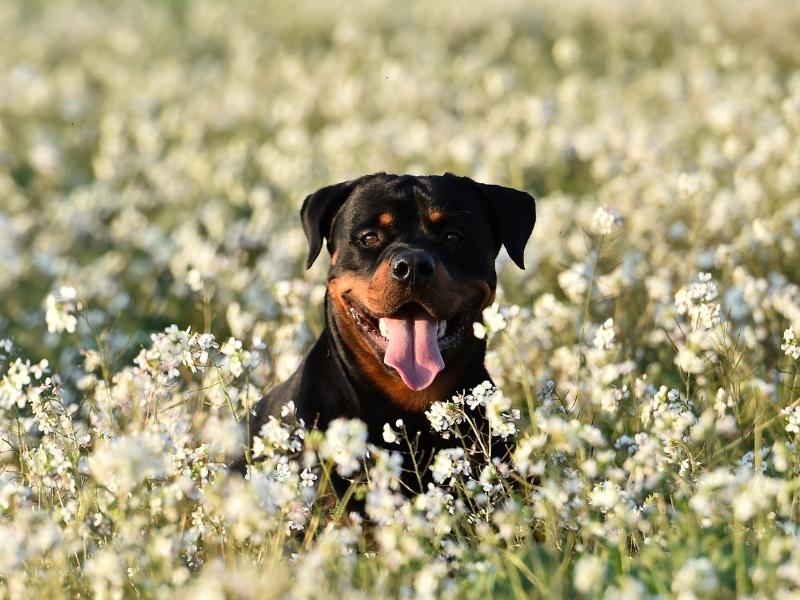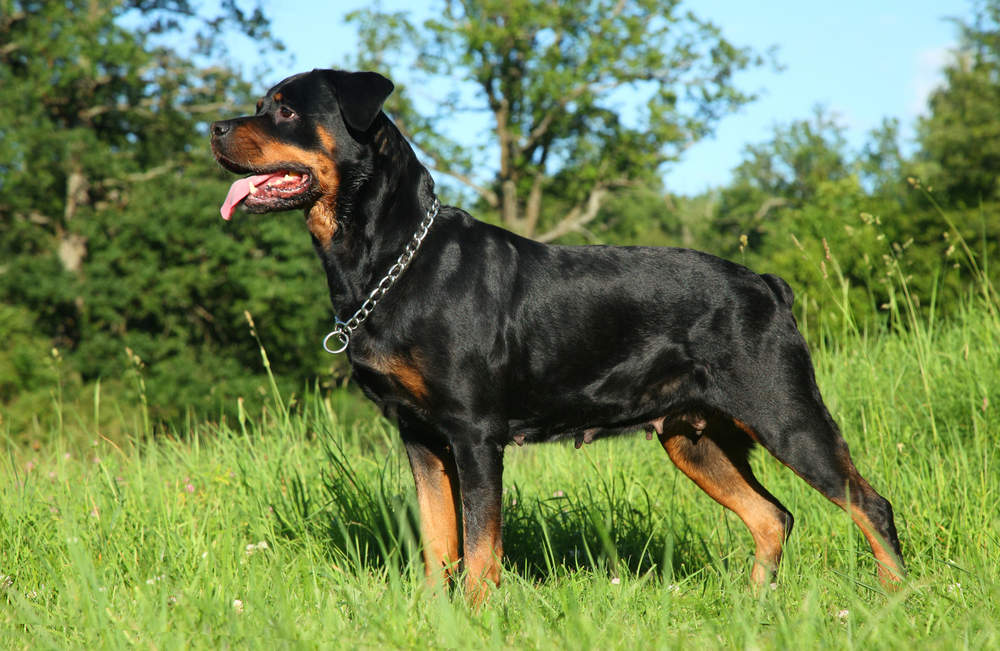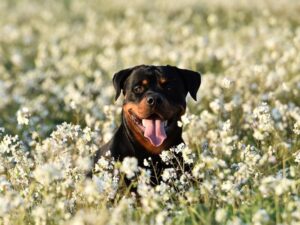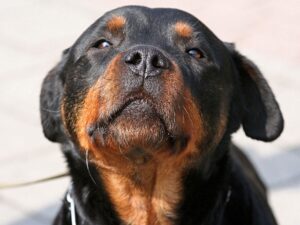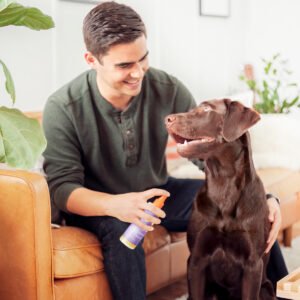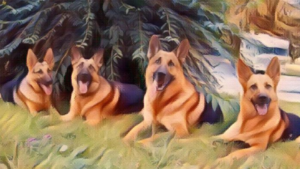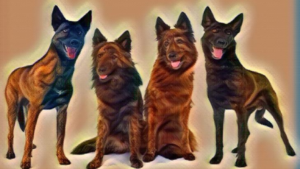Top 11 Best Dog Deodorizing Sprays – Product Reviews and...
Read MoreAll About a Rottweiler

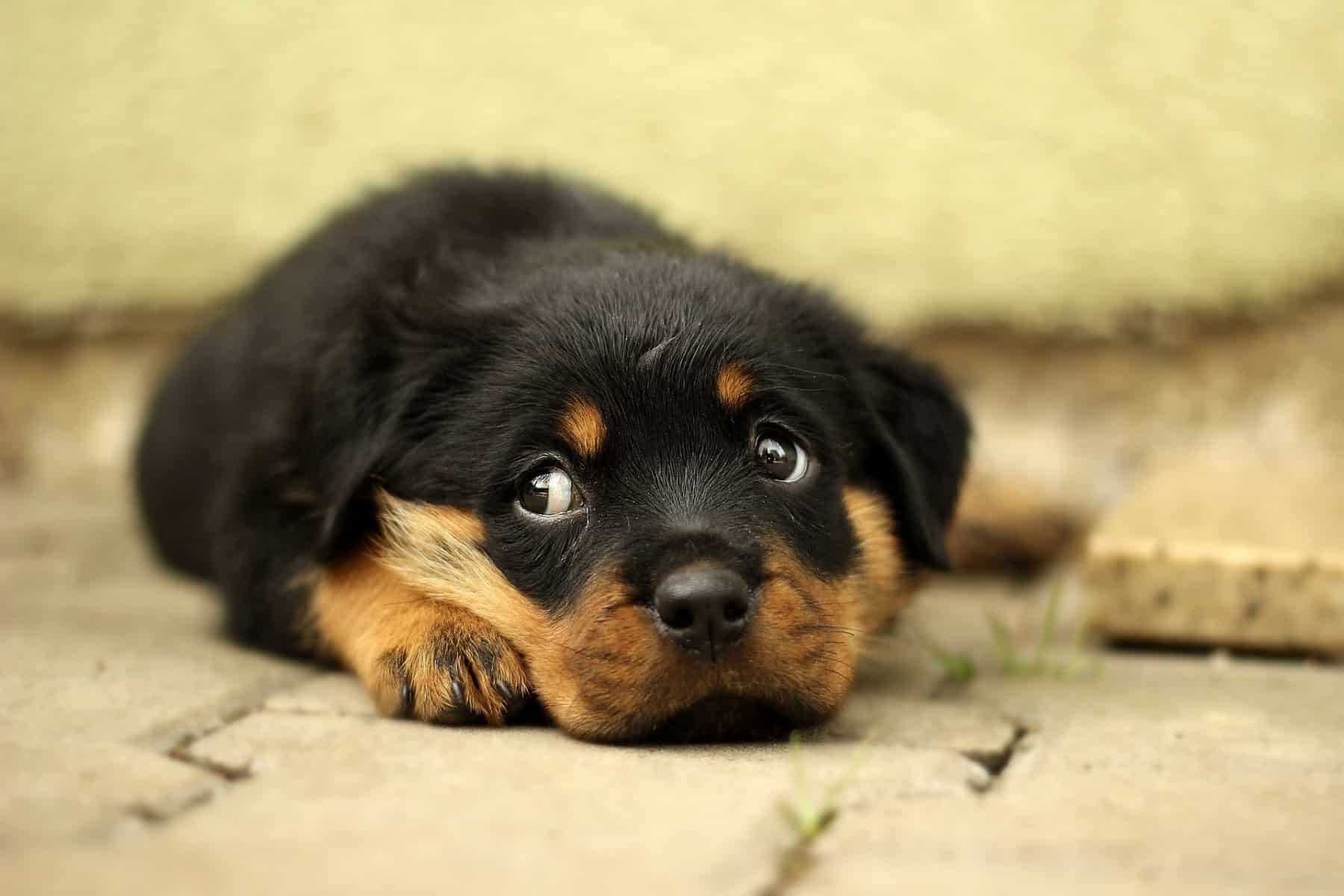
Rottweiler
What Makes Us Different?
The Rottweiler is a large, muscular dog with a powerful build. The head is broad and has a rounded forehead. The muzzle is well-developed, and the teeth meet in a scissors bite. The nose is wide and black, and the lips are also black. The inside of the mouth is dark. The eyes are medium-sized and almond-shaped. They are typically dark, but some Rottweilers have been known to have blue eyes or one blue and one brown eye.
-
Good With Children
-
Good With Other Dogs
-
Affection Level
- Energy Level
-
Trainability Level
-
Barking Level
The Rottie is a gentle giant that is powerful, calm, trainable, courageous and devoted to its owner and family. The Rottie is a docile, natural guard dog with a laid-back, reliable temperament. It is highly intelligent and has proven its worth beyond question in police, military and customs work over many centuries and can be trained for competitive obedience. Because of its size, training should begin when the dog is a small puppy. This breed needs a lot of leadership and socialization. It will not be happy confined to a kennel or backyard.
The Rottie is loyal and protective, it will defend its family fiercely if needed, seemingly immune to pain. Serious, even-tempered, brave, confident and courageous, this breed needs an owner who is strong minded, calm, but firm and able to handle this dog’s massive size.
Rottweilers are big, muscular dogs that were originally bred for working purposes. Today, they are still widely used in many different types of jobs, including law enforcement and security. Rottweilers are often stigmatized as being dangerous dogs, but this is not always the case. While they can be aggressive if not properly trained, Rottweilers are generally loyal and protective of their families. If you are considering owning a Rottweiler, it is important to do your research and be prepared to provide the necessary training and socialization. With proper care, a Rottweiler can make a wonderful companion.
Rotties are gentle and loving with their families, but they can be aggressive toward strangers. This behavior is a vestige of their herding ancestry; in the wild, dogs use their bodies to nudge or bump animals into moving in the desired direction. However, a Rottie’s idea of a playful nudge can have much greater impact than intended, which is why it’s important to socialize and train them carefully. Rottweilers also require daily exercise; without it, they may become restless or destructive. Fortunately, they love to work and will excel at any activity you choose to do with them. Whether it’s competition obedience, agility, or even herding, a Rottie will gladly put in the effort to please you.
It’s no surprise that over the years the Rottweiler has excelled as a police dog, herding dog, service dog, therapy dog, and obedience competitor. In fact, the Rottweiler can do nearly anything asked of him, and if you don’t ask, he’ll probably find something to do on his own — which may involve eating your sofa or digging a hole for that swimming pool you always wanted in the backyard.
But in the right home, with early socialization and training, the Rottweiler can be a wonderful companion, guardian, and all-around dog. He should live indoors as a family dog. The Rottweiler is an intelligent dog who learns quickly, but he can also be stubborn and willful if he isn’t given clear rules and consistent training. His guarding instincts require firm handling to prevent him from becoming overprotective.
Socialize your Rottie starting as a puppy by exposing him to different people, places, sounds, and experiences so he learns to accept them as normal parts of life. With early socialization and training, the Rottweiler can be a great companion for active adults and families with children old enough to treat him
Some Ads We Think You'll Like
Top 3 Pug traits
Very Smart
the Rottweiler is not innately a guard dog. In fact, he is a thinking dog who will first step back and assess a situation before taking action. This makes him an excellent choice for families with children, as he is less likely to react impulsively and cause injury.
Some Healthy Issues
Rottweilers are a large breed of dog, and like all large breeds, they are prone to certain health problems. One of the most common problems is hip dysplasia, a condition in which the hip joint does not fit properly into the socket.
Needs Love
Rottweilers are often portrayed as being tough and insensitive, but the reality is that they are surprisingly sensitive dogs. Like all dogs, they form strong bonds with their owners and can suffer from separation anxiety when left alone.
The Roman Empire was a major force in shaping Western Europe, and one of the areas that it had a significant impact on was dog breeding. The Romans were very practical people and they applied this same approach to their dogs. They began to selectively breed dogs for specific purposes, such as hunting or guarding. This led to the development of many different breeds of dogs, each with its own unique set of skills. The Roman Empire also exported these dogs to other parts of the world, where they quickly became popular. In this way, the Roman Empire had a profound impact on the development of the modern dog breeds that we know today. Thank you.
The Rottweiler is a medium to large size breed of domesticated dog that is considered to be one of the oldest herding breeds. The Rottweiler descends from dogs used by the Ancient Romans to drive herds that fed the Roman army as it travelled through Europe. These Roman dogs then bred with local dogs, and in the town of Rottweil, Germany, the result was a strong, versatile dog breed that was used by butchers to drive cattle to market. On the way home, the Rottweilers guarded the butchers’ proceeds from robbers. The dogs also pulled carts and delivered meat and milk to customers.
However, with the advent of motorized vehicles, the need for the Rottweiler decreased and numbers of the breed declined sharply. Fortunately, German dog lovers saved it from extinction and people in other countries began to appreciate the breed for its work ethic and protective nature. Today, the Rottweiler is still used as a working dog in many professions such as police work, herding, Search and Rescue, and as a service dog for disabled individuals. They are also popular family pets and companion animals.
In the centuries after the Roman empire’s collapse, the Roman drover dogs found work in the cattle town of Rottweil. It was here, moving herds from pasture to market and protecting all concerned from bandits and rustlers along the way, that they earned the name Rottweiler Metzgerhund, or Butcher’s Dog of Rottweil. The Rottie’s career in livestock ended with the rise of the railroad cattle cars in the 1800s.
They found new work as police dogs, personal protectors, and all-around blue-collar dogs capable of performing various heavy-duty tasks. Rotties were among the first guide dogs for the blind, and in more recent times they distinguished themselves as search-and-rescue workers at such disaster sites as Oklahoma City and the World Trade Center. Though their roles have changed over time, Rottweilers have always been working dogs, bred for their strength, loyalty, and intelligence. Today they continue to be popular family pets and valued members of law enforcement and search-and-rescue teams around the world.
The Rottweiler is a large breed of domestic dog, one of the oldest of the herding breeds. Originally bred in Germany, the Rottweiler is a descendant of the mastiff-type dogs known as Molossers. The name Rottweiler comes from the town of Rottweil, Germany, where these dogs were used to herd cattle and pull carts loaded with meat to market. Today, the Rottweiler ranks 11th among the breeds registered by the American Kennel Club.
That’s down quite a bit from the 1990s, when he was ranked No. 2 for two years in a row, but that’s just fine with Rottweiler people. They are satisfied to keep the breed as their own special secret. The Rottweiler is a large and powerful dog, with a robust build and broad head. He is broad and muscular, with a thick coat that can be black, brown, or tan with black markings. The Rottweiler is an intelligent and trainable dog, but he can also be headstrong and stubborn. With proper training and socialization, he can be an excellent family companion and loyal protector.
Rottweiler
About this Breed
Just like people, Rottweilers come in all shapes and sizes - and personalities. Some Rotties are serious and reserved, while others are silly and fun-loving. And just like people, each Rottie is an individual. That means that even within the same litter, each puppy can have a different personality. One Rottweiler might be calm and alert, while another might be nervous or shy. So if you're thinking of adding a Rottweiler to your family, it's important to do your research and find a pup that's the right fit for you. With the rightRottweiler by your side, you'll have a furry friend for life.

Aloof
A Rottweiler is a serious dog. Aloof and not in your face, he will nevertheless follow you around to make sure you're safe. He's content to spend time by himself, which can make him a good choice for those who work during the day. But when he's with his family, he's loving and sometimes even clownish. bred as a working dog, the Rottweiler is powerful and fearless. But he's also intelligent andtrainable. If you're looking for a guardian, look no further than the Rottweiler. just be prepared to give him the training and exercise he needs to stay happy and healthy.

Personality
Rottweilers are territorial by nature and will not permit strangers onto their property or in their home unless their owner welcomes the person. Some Rottweilers will not even let people they know into the house if the owner isn’t there, which can be a problem if you need to have a pet sitter or some other person come in while you are gone. To avoid this issue, it is important to socialize your Rottweiler from a young age.

Train Young
Start training your Rottweiler puppy the day you bring him home. That little black-and-tan ball of fluff is capable of soaking up everything you can teach him. Do not wait until he is 6 months old to begin training, or you will have a much bigger, more headstrong dog to deal with.

